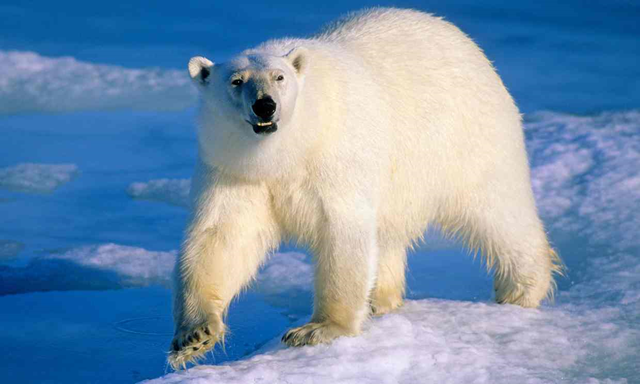

| Online: | |
| Visits: | |
| Stories: |

| Story Views | |
| Now: | |
| Last Hour: | |
| Last 24 Hours: | |
| Total: | |
How disappearing sea ice has put Arctic ecosystem under threat
By Robin McKie
4 March 2017(The Guardian) – In a few days the Arctic’s beleaguered sea ice cover is likely to set another grim record. Its coverage is on course to be the lowest winter maximum extent ever observed since satellite records began. These show that more than 2 million square kilometres of midwinter sea ice have disappeared from the Arctic in less than 40 years.
The ice’s disappearance – triggered by global warming caused by rising carbon emissions from cars and factories – is likely to have profound implications for the planet. A loss of sea ice means a loss of reflectivity of solar rays and further rises in global temperatures, warn researchers.
But there are other pressing concerns, they add. Sea ice loss is now posing serious threats to the Arctic’s indigenous species – its seals, fish, wolves, foxes and polar bears. “The Arctic food chain relies on a stable sea ice platform and that is now disappearing, putting the region’s wildlife at risk,” said marine ecologist Tom Brown, of the Scottish Association for Marine Science (Sams), in Oban.
Sea ice provides a platform from which polar bears can hunt, and it links communities of land animals such as foxes and wolves. “The sea ice cap has been retreating for decades, and as it does the animals who live on its edge have had to move north,” said Andrew Shepherd, professor of Earth observation at Leeds University.
“But that process takes them further and further away from land – and there is likely to be a limit about the distance they can tolerate.”
In fact, the erosion of sea ice strikes at the very root of the Arctic ecosystem, for it provides a surface on which algae – the basic material on which the entire food chain in the region depends – can grow. “Algae lingers on the underside of sea ice and as spring begins there is a major increase in its growth,” said Brown. “It is then eaten by tiny creatures called zooplankton, and they in turn are eaten by fish that are in turn eaten by seals, which are in turn consumed by polar bears. But if algae levels drop the whole food chain is disrupted.”
This point was backed by Professor Geraint Tarling, of the British Antarctic Survey. “The most important of the consumers of algae is a species of zooplankton called Calanus glacialis. It is rich in fats like omega-3 and is consumed by Arctic cod and baleen whales,” he said. “Crucially, in recent years levels of Calanus glacialis have been found to be declining and are retreating in their range. In its place a temperate species called Calanus finmarchicus has appeared, but it contains much less fat and that is of poorer quality. As a foodstuff it is simply inferior.”
The base of the Arctic food chain is being depleted, in other words. [more]
How disappearing sea ice has put Arctic ecosystem under threat
Source: http://www.desdemonadespair.net/2017/03/how-disappearing-sea-ice-has-put-arctic.html



